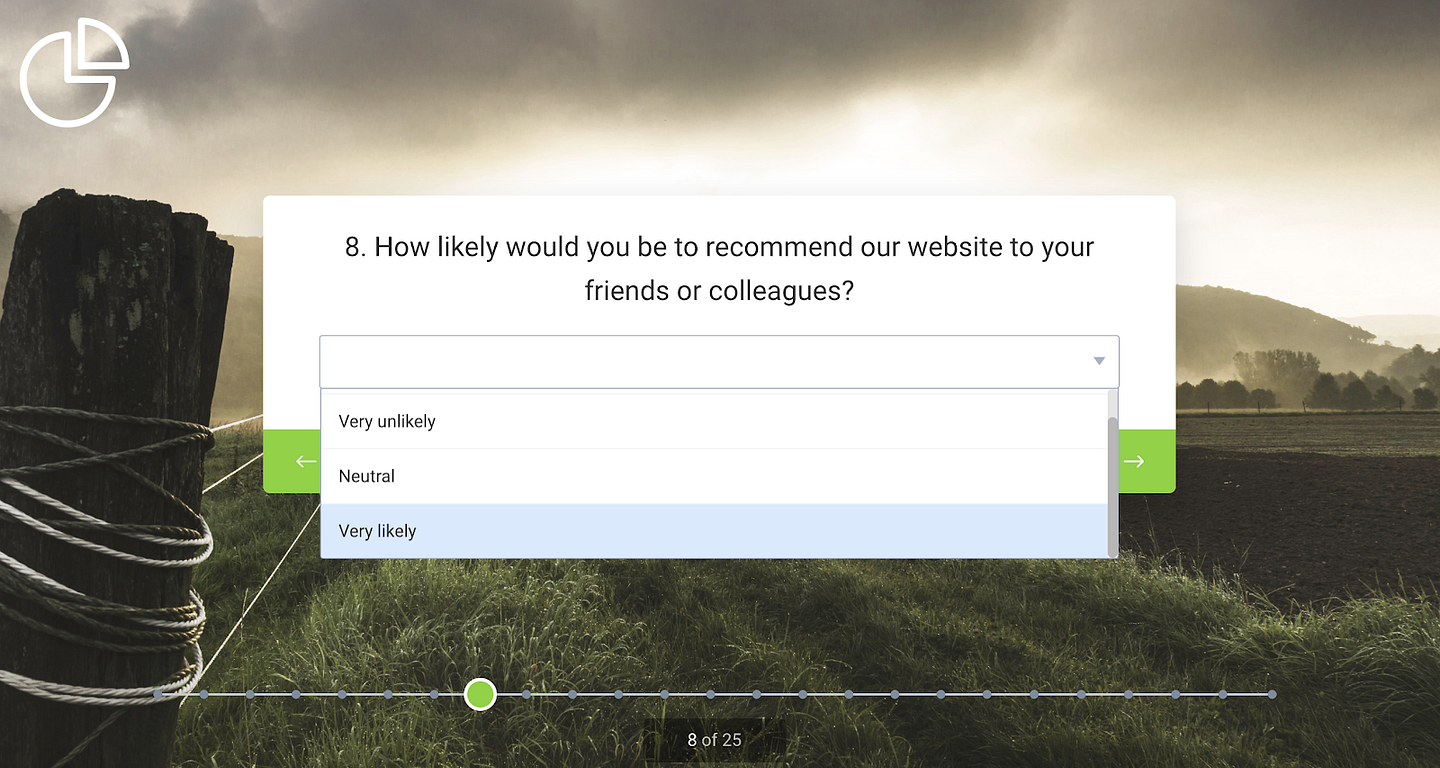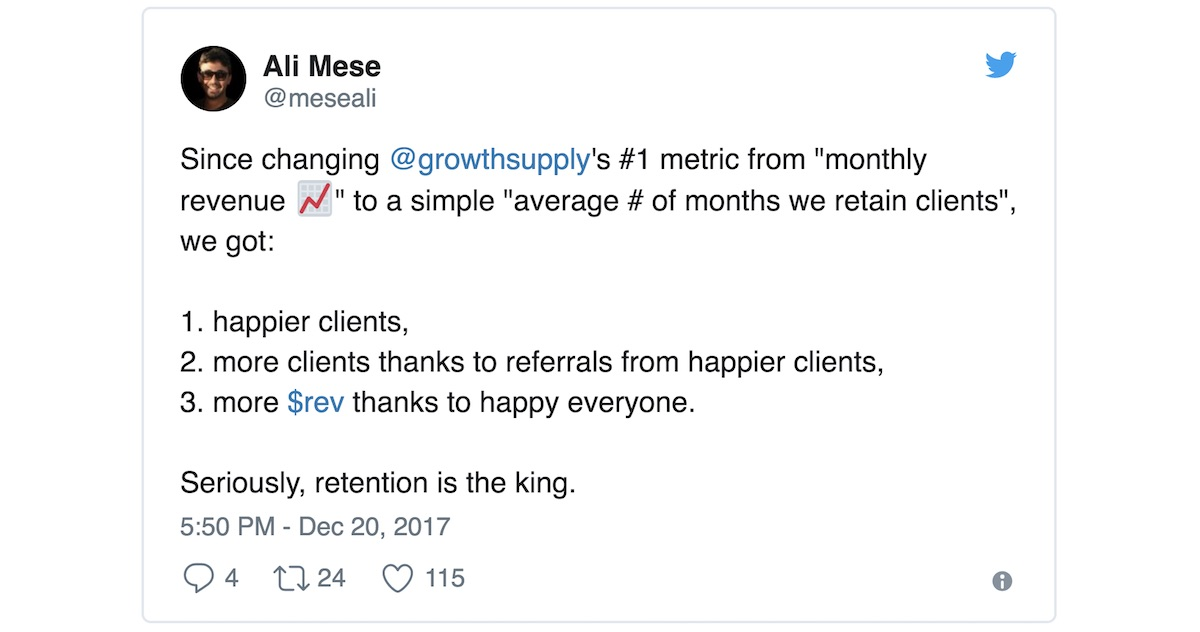Fast and fickle consumers. That’s how Nielsen labels people who are ready to jump ship on even their favorite brands once a competitor piques their interest.
It’s no secret: we’re addicted to the newness that gives us the dopamine surge as opposed to the goodness of a thing. We continually scan our Twitter feeds, thumb through Instagram and refresh our email inboxes. We’re curious and committed to discovering the latest trends, products, and services.
On one hand, this creates a great opportunity for businesses looking to take advantage of novel forms of organic marketing. On the other hand, it presents the fast & fickle challenge: only 8% of global consumers say they’re committed to the brands they purchase.
While many entrepreneurs dedicate their time and attention to customer acquisition, I’d argue that customer retention is more important than ever. As I’ve written before: Failing to prioritize customer retention is like trying to fill a bathtub without the drain plug — you can keep the water running, but the bath won’t ever be full.
According to one study by Harvard Business School, it’s 5x — 25x more expensive to acquire a new customer than it is to retain an existing one. What’s more, increasing customer retention rates by 5% can increase profits by 25% to 95%.
I put together five simple techniques for keeping customers satisfied and boosting their loyalty to your brand. I hope they’ll help as much as they’ve helped us at Jotform.
Pro Tip
Increase customer retention with Jotform AI Agents by offering consistent, personalized support that anticipates customer needs and fosters long-term loyalty.
Strategies for improving your customer retention rate
1. Collect data to understand the “why”
“If I’m interested in keeping customers, I’m interested in understanding how many leave and the underlying reasons why they are ending their relationship with me.”
— Jill Avery, a senior lecturer at Harvard Business School.
To increase retention, it’s crucial to dig into data to better understand customer issues. Consider the story of Zapier, an enterprise app integration service that realized they needed a more systematic approach to increasing customer retention. When they looked closer at their data, they noticed a huge upswing in support requests. This tipped them off that customers were experiencing frustration, which may have led them to switch providers.
The Zapier team reportedly “hunker[ed] down for a week to write 278 pages of help documentation, which had been nearly non-existent before.”
Afterward, they saw support requests “immediately decline,” — indicating that customers were experiencing fewer issues and happier with the service.
Feedback forms are a great tool for understanding the needs of your customers and identifying issues before they become dealbreakers. A simple customer satisfaction survey, for example, can shed light on a user’s satisfaction with customer service and allow users to elaborate on their subjective experiences. Or, a website questionnaire is an easy way to elicit users’ feedback, evaluations, and suggestions about your e-commerce site or services.
2. And don’t forget the “when”
When we talk about the “customer journey,” we’re looking at the entire user trajectory, from acquisition to every interaction with your brand thereafter. With respect to user data, it’s important to understand not just what happened, but also when it happened. Take churn rates: the rate at which we gain and lose users.
Says Jill Avery:
“Looking at churn rates by customer segment illuminates which types of customers are at risk and which may require an intervention. It’s a nice simple metric that tells us a lot about when and how to interact with customers.”
So, if we see higher rates of churn at certain points in the customer journey — e.g., after the first use or following a support request — we can identify important areas to intervene. Offering feedback forms throughout the journey can help us to better understand the “when.”
3. “The most human brand wins” — make a personal connection with users
As expert marketers will tell you, forging a genuine, personal connection with customers is one of the most effective ways to shore up retention. This means letting down the corporate veil and creating spaces where users have a chance to get to know you and maybe even meet each other — for example, blogging, hosting live events, or launching online communities.
Mark Schaefer, author of “Marketing Rebellion: The Most Human Company Wins,” likens it to the difference between listening to an album and going to a concert with friends — the latter creates an emotional bond that you’re not going to forget.
With this strategy, you can reach a whole new level of engagement. Your users can gain a sense of community — like Airbnb’s host community or Nike Run Clubs — and a sense of loyalty that transcends the typical customer relationship.
4. Zero in on customer loyalty
The Net Promoter Score®, or NPS®, is a widely used measure, first introduced by Harvard Business Review over 16 years ago. It focuses on a single question: On a scale of 0 to 10, how likely are you to recommend our company? This seemingly simple question is a remarkably effective method for gauging user sentiment.
And a high NPS is extremely valuable. Think about it: if you’re planning a family vacation, where are you more likely to stay: a hotel with a decent ranking on Google or a little-known place that your close friend couldn’t stop raving about. If you’re like me, you’re going with the latter.
A net promoter score form is a quick way to gather this insight. It asks questions such as:
How likely are you to recommend our product to a friend or colleague?
Would you buy our product again?
5. Consider customer loyalty programs
Customer loyalty programs are another simple, surprisingly effective technique for boosting customer retention. Up to 84% of consumers say they’re more likely to stick with a brand that offers a loyalty program — and I’m not just talking about the punch card from your friendly neighborhood coffee shop.
Today, companies are finding innovative ways to reward customers for their fidelity. The North Face, for example, tailors reward options to its loyalty members’ lifestyles. Customers can use points toward new products or unique travel experiences — like a mountain climbing adventure in Nepal — and they can earn points in various ways, from purchases to downloading The North Face’s app.
An innovative approach that speaks to your users’ specific needs, wants and values, can drive customer retention.
As Growth Supply founder Ali Mese writes:
“In a world where consumers become increasingly selective over what they consume, retention is emerging as a key factor that differentiates the successful from those who fail.”
It comes down to curiosity: being continually curious about the customer experience at every step of the journey, asking for and listening to their feedback, and rewarding the ones who stick with you.
Net Promoter®, NPS®, NPS Prism®, and the NPS-related emoticons are registered trademarks of Bain & Company, Inc., NICE Systems, Inc., and Fred Reichheld. Net Promoter ScoreSM and Net Promoter SystemSM are service marks of Bain & Company, Inc., NICE Systems, Inc., and Fred Reichheld.
























Send Comment: